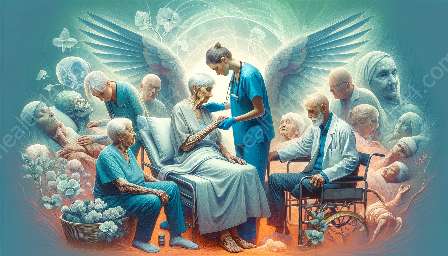Falls and fractures have significant implications for the health of the elderly population, particularly within the field of geriatric medicine. This article aims to delve into the various aspects of this topic to understand the impact and the interventions that can be employed to minimize the negative outcomes.
The Impact of Falls and Fractures on Elderly Health
Falls and fractures can have profound effects on the physical, emotional, and social well-being of the elderly. In terms of physical health, falls and fractures often lead to reduced mobility, chronic pain, and functional decline. Fractures, especially hip fractures, are strongly associated with increased morbidity and mortality in the elderly population. Moreover, these incidents can also precipitate a cascade of events leading to hospitalizations, institutionalization, and loss of independence.
From an emotional perspective, the fear of falling again can lead to anxiety, depression, and a decrease in quality of life. Socially, falls and fractures can limit an individual's ability to engage in social activities and maintain relationships, leading to feelings of isolation and loneliness.
Falls and Fractures within the Context of Geriatric Medicine
Within the field of geriatric medicine, falls and fractures are recognized as significant health issues, and comprehensive approaches are developed to address and mitigate their impact. Geriatrics focuses on the unique healthcare needs of older adults, aiming to optimize their health and well-being through preventive measures and interventions.
The management of falls and fractures in geriatric medicine includes risk assessment, tailored interventions, and multidisciplinary approaches. Comprehensive assessments are essential to identify underlying risk factors such as balance and gait problems, medication-related issues, vision impairments, and environmental hazards. Interventions might include physical therapy, strength and balance exercises, medication review, and home modifications to enhance safety. Moreover, collaborative efforts involving geriatricians, physiotherapists, occupational therapists, and social workers are crucial to address the multifaceted aspects of falls and fractures in the elderly.
Preventive Strategies and Interventions
Prevention plays a pivotal role in reducing the burden of falls and fractures in the elderly population. Comprehensive geriatric assessments and personalized care plans are essential components of preventive strategies. Additionally, promoting physical activity, optimizing nutrition, and managing chronic conditions such as osteoporosis can contribute to reducing the risk of falls and fractures.
Furthermore, the integration of technology and telemedicine in geriatric care can enhance monitoring and early intervention for individuals at risk. Tele-rehabilitation programs, wearable fall detection devices, and remote consultations with healthcare providers can supplement traditional care delivery models, particularly in the context of improving accessibility for older adults.
Conclusion
Falls and fractures are significant concerns for the health and well-being of the elderly population, and their impact within the realm of geriatric medicine cannot be overstated. Through a holistic and proactive approach encompassing prevention, assessment, and multidisciplinary interventions, the adverse outcomes associated with falls and fractures can be mitigated, thereby promoting better health and quality of life for older adults.


